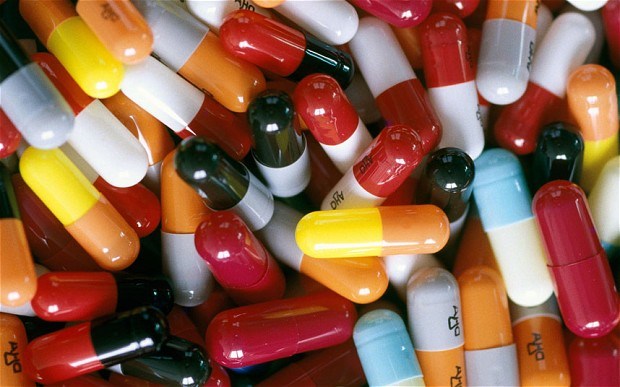Protecting Our Defenses: Our Extensive Use of Antibiotics Reduces the Diversity of the Microbiome4/27/2015 By Tiago Palmisano
Edited By Arianna Winchester One of the greatest accomplishments of civilization is our ability to purposefully modify the natural world. Scientific research has taught us that we are surrounded by microorganisms too small to see with the naked eye. Of the hundred trillion cells that constitute the average human body, only ten percent of them are our own human cells. The other ninety percent are microorganisms such as bacteria or viruses. This is what we call the human microbiome. Much of modern medicine is based around controlling the microbiome to encourage the health of our bodies. Specifically, we are able to regulate the activity of the bacteria in the microbiome through a class of drugs known as antibiotics. Luckily, most of the bacteria in the environment are either beneficial to our bodies or don’t affect us, but a few species do pose a threat to human health. Antibiotics are drugs that allow us to selectively destroy bacteria without damaging human cells. Alexander Fleming discovered the first of these revolutionary drugs, Penicillin, in 1928. Since then, dangerous illnesses caused by bacteria, such as tuberculosis and syphilis, are now easily curable and have been almost completely eradicated. However, the use of antibiotics is a double edged sword; recently, certain risks have become associated with antibiotic use. Since antibiotics destroy some bacteria of our microbiome, we are inadvertently encouraging the growth of new strains of bacteria which will develop immunity to our medicine. Over time, bacteria evolve to survive the effects of our antibiotics. For example, extensive use of the antibiotic Methicillin has led to diseases such as MRSA, which stands for methicillin-resistant Staphylococcus aureus. Patients who get MRSA have become infected with a strain of bacteria that has acquired immunity to the drug we used to kill it. By using our antibiotic treatments, we have indirectly created a dangerous disease. Bacterial evolution is much faster than the rate at which we can synthesize new drugs, and so the rise of antibiotic resistant (ABR) microbes is a significant problem for the medical community. Gonorrhea, which used to be an easily treatable disease, may soon become completely resistant to current antibiotics. We cannot deny that antibiotics save lives and increase our standard of living, but the recent emergence of ABR infections demands that we learn to use them more responsibly. Newborns, for instance, are normally given a preventative treatment of antibiotics after birth to protect against possible infections. However, these drugs diminish the initial colonization of microbiome bacteria in the infant’s gut that could provide key physiological functions later in life. Research has shown that narrowing the diversity of a newborn’s microbiome can result in a higher chance of developing allergic asthma and other inflammatory diseases in the future. Furthermore, recent studies of an isolated South American tribe demonstrate the long-term effects of the potential overuse of antibiotics. A group of Yanomami Amerindians in southern Venezuela offers an ideal model of the undisturbed human microbiome, since the tribe has been isolated for more than eleven thousand years. Scientists found that the diversity of bacteria in oral, skin and fecal samples from the Yanomami Amerindians was significantly higher than the bacterial diversity of Western people. From this, we can infer that the long-term exposure to Penicillin and other similar drugs could inhibit the bacterium-human relationship. Interestingly, the microbiome of the isolated tribe contained some antibiotic-resistant bacteria, even though none of the Yanomami Amerindians had ever taken an antibiotic drug. The presence of these protective bacteria is most likely a result of exposure to naturally occurring antibiotic microbes in the soil. This unexpected finding suggests that a small amount of antibiotic resistance naturally occurs in the human microbiome. The fact that certain amounts of ABR organisms normally occur may provide an explanation for the extreme pace at which resistant diseases have arisen in Western civilization. Our substantial use of antibiotics may have poured gasoline onto a pre-existing fire, which allowed the naturally occurring resistant bacteria to spread throughout human society. The argument presented here is not against the use of antibiotics; it is simply a reminder to use our antibiotics responsibly. The advances of modern medicine have undoubtedly improved our defenses against disease, and we should not abandon those treatment options. However, we must be mindful of the very real threat posed by the rise of ABR microbes. To reduce this threat, the global community should take measures to control the amounts of antibiotics used in commercial industry. Comprehensive guidelines for estimating the risk of resistant bacteria should also be established. If we fail to use antibiotics responsibly, they in turn will eventually fail us.
0 Comments
Leave a Reply. |
Categories
All
Archives
April 2024
|

